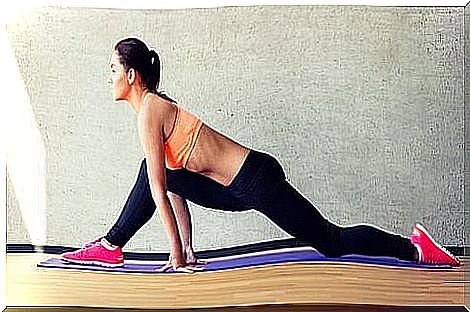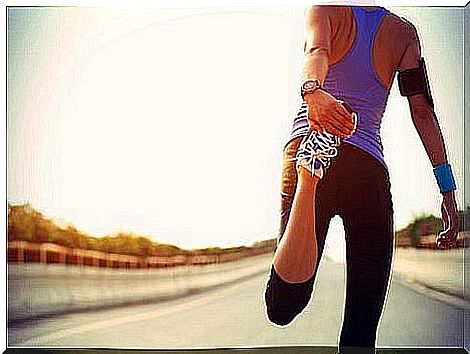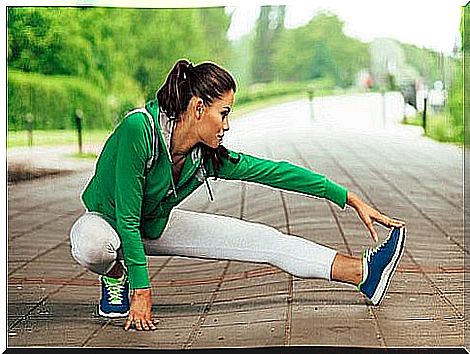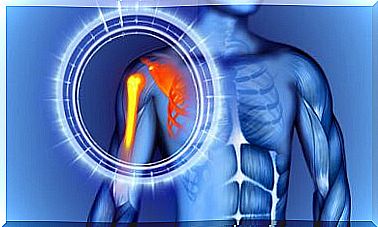The Best Stretches Before Exercise
Not taking the time to stretch before exercise can be a mistake in certain circumstances. It is an inescapable part of the routine for some athletes, but it can be harmful in other cases.
According to some experts that we will cite below, the previous stretches help to avoid certain injuries or cramps. Learn about the best stretches to do before exercising.
The role of stretching before sport

Various physical activity professionals maintain that, with a series of movements prior to the beginning of the routine, you can prepare the muscles and keep them flexible, thus avoiding certain injuries and subsequent pain. This is what is explained in a study published by the British Journal of Sports Medicine .
Stretching is a preventive measure also for the joints. Because it enhances flexibility and dexterity, it can be useful in sports such as dance or gymnastics, but it is not advisable in disciplines that demand strength, speed and power, according to a publication of the National Health Services of the United Kingdom.
Therefore, you must bear in mind that sports performance is not always improved when stretching ; in fact, in most cases this is not the case.
Therefore, the experts on the WebMD site point out that dynamic stretches are best to get the joints moving. In addition, the article highlights the importance of stretching after training, or at least doing it a couple of times a week.
According to a Mayo Clinic publication, stretching performed on a regular basis has several health benefits:
- Increase flexibility.
- Improves circulation.
- Correct body posture.
- Increase coordination.
Stretching considerations
Although the pre-stretches are simple, there are some things you should keep in mind to do them correctly without hurting yourself. As a first measure, it is good to know what the differences are between elongation before and after training.
- The pre-stretching prepares the muscles and joints so that they can react to different physical stimuli.
- It is advisable to warm up before stretching.
- The movements have to be slow and careful, so that the body temperature gradually increases and you are ready for intense exercise.
On the other hand, when you finish the routine, the opposite happens, since the stretches serve to eliminate the tensions produced by the sport, reduce muscle pain and contribute to good circulation.
However, you have to be careful. Overstretching can also be harmful, as confirmed by a study published by Medicine & Science in Sports & Exercise . This is because, in addition to undermining sports performance, it increases the chances of suffering injuries to muscles, joints and ligaments.
The best stretches according to the area worked
As we mentioned, stretching can be done both at the beginning and at the end of the exercise routine, although in the first case they are not always advisable.
In the cases where it is appropriate to carry them out, the idea is to pay more attention to the area to be trained or with greater demand during the session and to mobilize it for a few seconds. Some interesting stretches are:
Waist
- To elongate your waist, kneel on the floor and lean sideways with one arm resting on the floor. You can also do it standing up.
- Raise your other arm and stretch it over your head.
- When you finish and return to the starting position, switch sides.
Quadriceps

- Standing, bring your heel toward your thigh and support your leg with your hand. Apply a little force towards the body.
- If you can’t keep your balance, lean against a wall or look at a fixed point.
Hamstrings
- Sit on the floor or on a mat and spread your legs together.
- Grasp the balls of your feet with your hands and apply downward pressure with your torso.
- If you can’t fully stretch, at least keep your arms as close as possible, for example holding your ankles or knees.
Twins
- Stand in front of a wall and put the balls of your feet on it.
- Apply pressure leaving the heel on the ground.
Another option is to use a step:
- Support only the toes and let the foot “drop” down. You can also raise and lower the instep.
Abductors

- To stretch the inside of your legs, squat down and stretch one leg out to the side.
- Try to touch the balls of your feet with your hands and keep your balance by resting your free palm on the ground, as shown in the image above.
Triceps
- Bend your arm and bring your hand behind your head.
- Grab your elbow with your other hand to apply pressure.
- The idea is that the elbow is “glued” to the ear.
dolls
- Stretch your arm out in front of your body and put your hand palm forward and fingers up.
- Take the fingers with the other hand and press towards the side of the body.
- Change by putting your fingers down and repeat the pressure.
Shoulders
- Standing with your arms at your sides, rotate your shoulders in a circle, first forwards and then backwards.
Neck

- Stand up and keep your back as straight as possible.
- Bring your head back very slowly, wait a few seconds and return to the starting position.
- Another option is to turn your head in circles, first from the right and then from the left.
Other guidelines for stretching before training
Ultimately, we recommend that all stretching exercises before or after exercise are led by a teacher or trainer. In this way, you will correctly learn the technique of each one and you will better control the duration.
In this sense, it is essential that you do not overload your muscles before starting the routine. Otherwise, in the middle of the session you will be very tired or sore.
Finally, also check with your coach what types of previous stretches are advisable in the discipline you practice. As we said before, while they can help prevent certain muscle problems, they can also cause a drop in performance.









